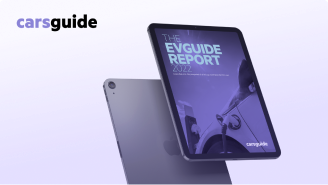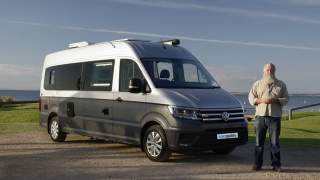
Hydrogen fuel cell cars explained
- Hyundai Nexo
- Toyota Mirai
- Electric Cars
- Hyundai Nexo Reviews
- Toyota Mirai Reviews
- Hyundai
- Toyota
- EV Advice
- Hyundai Advice
- Toyota Advice
- EV
- Hydrogen

Automotive technology has come along in leaps and bounds over the last couple of decades, with a general trend towards creating greener vehicles that produce fewer environmentally harmful emissions.
Consumers are only just getting their heads around electric vehicles (EVs) and all of their different variants - hybrids, mild hybrids, plug-in hybrid electric vehicles (PHEVs). With all that going on, the mention of something else entirely - hydrogen cars and how hydrogen-powered cars work - can seem slightly daunting. A bit like finding out that maths has been reinvented and you have to go back to school.
The first thing to know, for those that aren’t aware, is exactly what hydrogen is. Simply put, it is the most abundant chemical in the universe and is found in water, natural gas, coal and petroleum. It can also be produced as a gas or as a liquid that is utilised as a fuel for vehicles.
How does a hydrogen car work?
The big difference between hydrogen vs electric cars is that EVs have an electric motor powered by a built-in battery that is charged by an external source, while a hydrogen-powered engine uses a device called a fuel cell to produce energy.
The fuel cell is about the same size and weight as an internal combustion engine, and sits under the bonnet in a similar fashion. It pumps in hydrogen from the fuel tank, reacting it with oxygen injected from the outside in the fuel-cell stack. This chemical reaction produces electrical energy, heat and water. The heat and water goes out the exhaust pipe as water vapour - completely harmless, as opposed to the carbon dioxide that’s released by cars with internal-combustion engines - and the electricity either goes straight to the electric 'hydrogen' motor or to a battery which acts as a buffer between the motor and fuel cell, or to store energy regenerated from the motor.
Read more about hydrogen technology
The batteries used in Fuel Cell Electric Vehicle (FCEV) are usually smaller than those found in EVs, roughly the same size as the kinds of batteries used in self-charging hybrid cars, since the fuel cell is constantly recharging it, thus creating no need for a larger, heavier battery like the ones which might be used for a plug-in hybrid (PHEV) or fully electric vehicle.


Download the EVGuide Report, 2022
Australia's one-stop snapshot of all things relating to electric cars.
As a result, hydrogen fuel cell efficiency is excellent. Hydrogen cars produce zero environmentally harmful emissions and require no fossil fuels to operate.
How is hydrogen fuel made?
Hydrogen fuel can be produced from methane or by electrolysis of water, and both processes can involve the use of fossil fuels, meaning that hydrogen cars can’t always claim to be 100 per cent green. Electrolysis (which can be seen as the opposite process from what a fuel cell does) is energy intensive, but can be achieved using methods involving wind or solar power, so the ability to make hydrogen without leaving a sizeable carbon footprint is realistic.
The hydrogen is typically stored in a tank inside the car in gas or liquid form, which is then released to the vehicle’s fuel cells to generate the electricity needed to run the car.
Hydrogen vs electric cars
Hydrogen cars have the edge on EVs in two important categories: range and refuelling time.
The Toyota Mirai has the smallest range of any commercial fuel cell sedan at 510km. Still, that’s better than the range on the base model of the Tesla Model 3 EV, which has a maximum range of 491km at the time of writing. (Elon Musk has, by the way, stated his disdain for hydrogen fuel cell car technology, calling it “stupid”.)
Hydrogen-powered vehicles are also a lot quicker to refuel than EVs - taking just three to five minutes (much like a petrol car) compared to the hours it can take to get an EV fully charged.

In regards to hydrogen cars, Australia is very much behind in terms of refuelling stations. Australia currently only has a handful permanent hydrogen refuelling stations, one at Sydney’s Hyundai headquarters and the other in Canberra.
More hydrogen refuelling stations are planned for Australia, however. Toyota is building a $7.4 million hydrogen centre in Altona, Victoria that will include hydrogen-refuelling stations, and further stations are planned for Sydney, Queensland, South Australia, Western Australia and Tasmania.
Are hydrogen cars safe?
When some people hear the word “hydrogen” they’re reminded of the Hindenburg disaster of 1937, where a German airship exploded in the US, killing 36. Hydrogen cars, it’s important to point out, are not airships.
The truth is that hydrogen-powered cars are just as safe as EVs and petrol-powered cars. It’s also worth keeping in mind that the average full petrol fuel tank has about four times the explosive power of a hydrogen fuel cell tank.
What hydrogen cars are available?
Hydrogen vehicles are a relatively new technology that have been on the market for less than a decade. The first commercially mass-produced model was 2012’s Hyundai ix35 FCEV.
As of 2021 there are no hydrogen vehicles for commercial sale in Australia, although some models will be available in the near future.

Hyundai’s hydrogen car, the Nexo SUV, and the Toyota Mirai are being trialled as part of loan programs in Australia, but they are not yet available to private buyers.
Audi, BMW, Honda and Mercedes-Benz have also developed hydrogen cars, but none have been announced yet for the Australian market - quite likely due to the fact that Australia currently doesn’t yet have sufficient infrastructure to support their use.
Hydrogen cars: advantages and disadvantages
Although hydrogen cars are yet to make any significant impact on the global stage, the movement away from fossil fuel-powered vehicles to those with zero emissions is gathering steam (no hydrogen-car pun intended), making it likely that hydrogen cars will eventually be seen on Australian roads.
Compared to EVs and combustion-engine vehicles, hydrogen cars state their case as an attractive option thanks to their superior range, quick refuelling time and, most importantly, the ability to operate without releasing harmful carbon dioxide into the Earth’s atmosphere.
The key advantage of the hydrogen system, though, is weight. Because a hydrogen fuel cell and hybrid battery is roughly equivalent in wieght to a petrol or diesel combustion system, it means hydrogen fuelled trucks, buses, or even utes can maintain both their payload and driving range, making hydrogen best-suited to replace diesel rather than petrol in the automotive ecosystem.
In fact, Hyundai's plan to roll out hydrogen globally, is to lead with commercial vehicles like its Xcient truck rather than its Nexo SUV, as it says commercial routes are the fastest way to help spread the required infrastructure.

However, the key disadvantage of hydrogen vehicles, preventing or slowing their adoption worldwide, is the requirement for a high level of investment in infrastrucutre, paticularly refuelling bowsers compared to electric vehicles.
Hydrogen refuelling stations require the fuel to be compressed and refrigerated, adding costs to on-site locations, and to support a high volume of vehicles, they require multiple reservoirs.











Comments